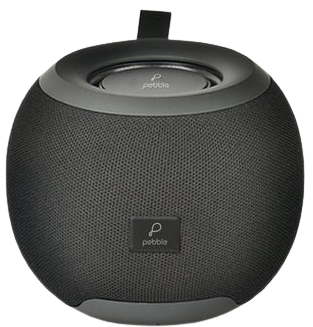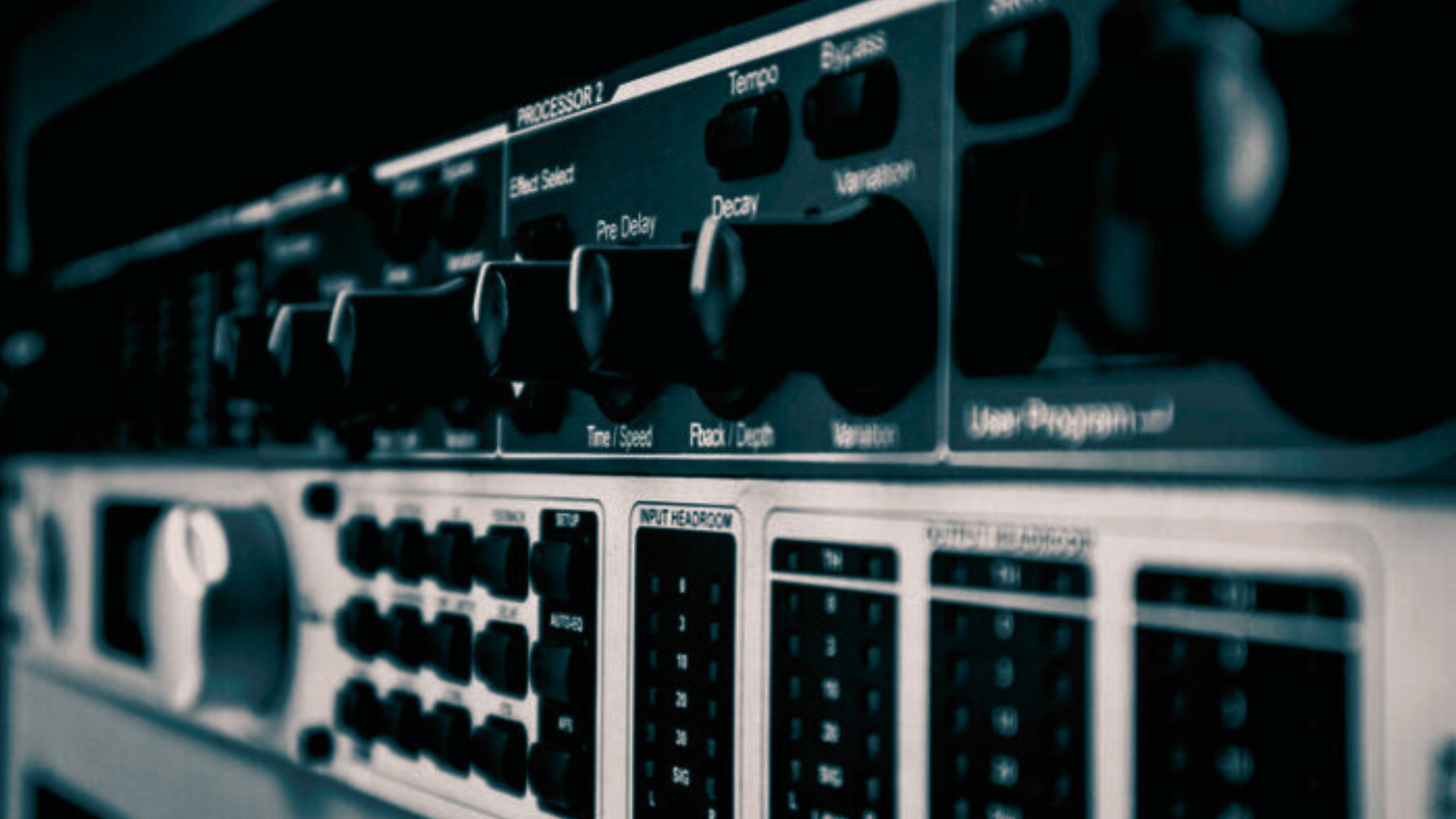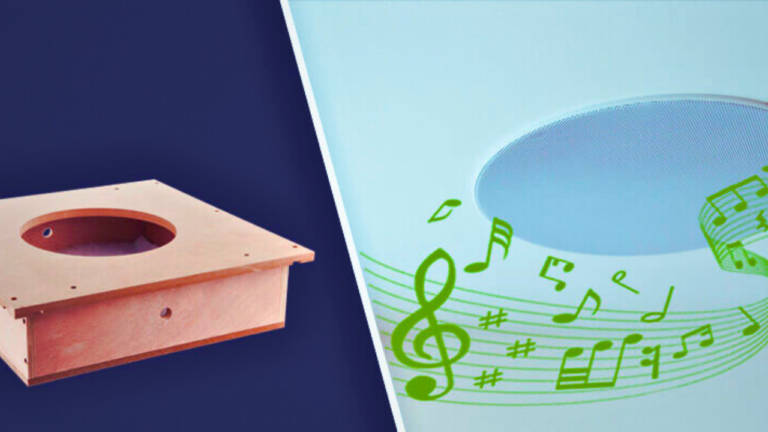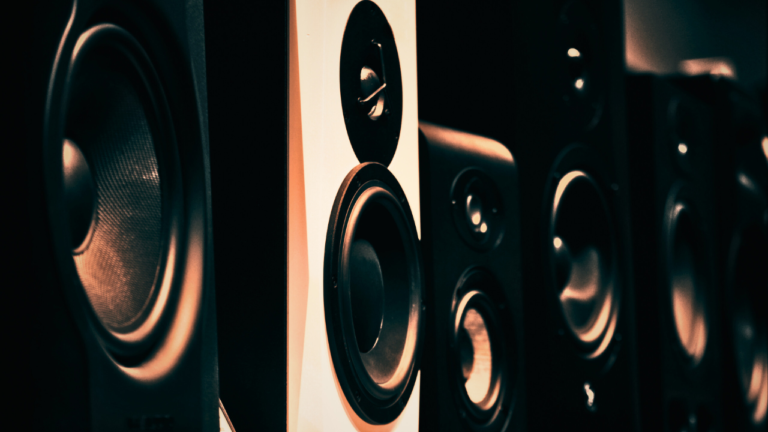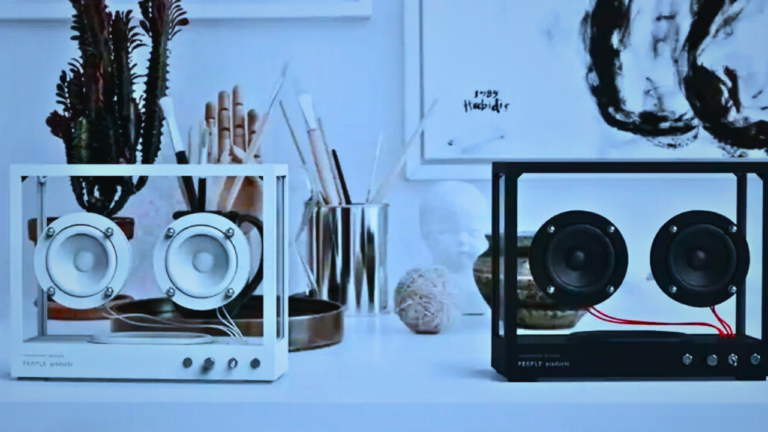How To Test Speakers Without An Amplifier?
Whether you’re an audio enthusiast or just someone trying to set up a sound system at home, knowing how to test speakers without an amplifier can be a valuable skill. It might seem tricky at first, but once you understand the process, it’s relatively straightforward. But why might you need to do this, you ask?
Perhaps you’ve found an old pair of speakers in your attic and you want to know if they still work? Or maybe you’ve bought a brand new set and want to make sure they’re in top condition before you go to the trouble of installing an amplifier? Whatever your reason, being able to test speakers without an amplifier can save you time and effort.
In this post, we’re going to show you some practical methods you can use to test speakers without an amplifier. Rest assured, you don’t need to be an electronics whiz to follow these steps. Let’s begin by understanding a little more about how speakers work.
Understanding Speakers
In brief, speakers are devices that convert electrical energy into sound waves. They consist of several components, the most essential being the cone, the voice coil, and the magnet. When an electrical signal is passed through the voice coil, it interacts with the magnet, causing the cone to vibrate and produce sound.
This is where our testing comes into play. If any part of this process is not functioning correctly, the speaker may not produce sound or may sound distorted. By properly testing your speakers, you can identify where the problem lies and seek to resolve it.
- The cone: The cone, also referred to as the diaphragm, is the part of the speaker that moves back and forth, pushing on air to create sound waves.
- The voice coil: This is the coil of wire that moves the cone. It converts the electrical signals into physical vibrations.
- The magnet: Positioned behind the cone and voice coil, the magnet provides the magnetic field for the voice coil to interact with, causing the cone to vibrate.
Armed with this knowledge, we can now move onto the methods for testing speakers without an amplifier.
What tools or methods can be used to test speakers without an amplifier?
When it comes to testing speakers without an amplifier, there are a few different tools and methods that you can use. These testing methods allow you to determine whether or not your speakers are working correctly, and they don’t require any complex equipment or technical knowledge. Let’s explore some of these in detail:
- Use a digital multimeter. A multimeter is a handy tool that tests the electrical resistance of your speakers, indicating whether there’s a circuit flowing through them. When testing, you should ideally receive an Ohm (Ω) reading close to the speaker’s rated impedance. A zero reading indicates a short circuit, while a no reading indicates a broken circuit—both suggest problems.
- Battery test:This is a reliable old-school technique and demands a basic 1.5V battery. You connect the speaker wires to the battery, and if the speaker cone moves upwards or outwards, you’ll know the speaker is working. Be aware not to hold the battery against the terminals too long to avoid damage.
- Audio output test:When an amplifier is not available, mobile phones, tablets, or laptops could serve as substitutes. Connect the speaker output wires directly to the headphone jack of these devices. Play a sound or music file; if it comes out of the speaker, it’s functioning well.
- Use speaker testing software. There are many kinds of speaker testing software available. These programs usually require you to connect the speakers to your PC, and they’ll generate a variety of test tones and sounds that allow you to thoroughly check your speakers for any issues.
Remember, testing speakers is not a one-size-fits-all situation. What works best for you might depend on the nature of your speakers, their size, and your technical familiarity with speakers. Therefore, it’s important to try different methods and decide on the one that suits your individual circumstances.
What are the common issues one might encounter while testing speakers?
Testing speakers without an amplifier can indeed be a tricky task. You might come across a few bumps on the road, but there’s nothing you can’t navigate around. Let’s explore some of the common issues one might encounter.
Distorted sounds
One of the most common issues you might encounter while testing speakers without an amplifier is distortion in the sound. This could be due to various reasons, like damage to the speaker cone, an inappropriate power supply, or internal speaker damage. The distortion typically manifests as a crackling sound, or the audio might sound muffled.
Lack of Power
Since you’re testing your speakers without an amplifier, power could be an issue. Speakers require adequate power to function optimally, and in this scenario, they might not get enough power, leading to weak or no sound.
Wiring Problems
In a typical setting, there may be multiple speakers working in unison. If there’s an issue with the wiring or the connections between the speakers, it could impact the overall sound quality. Faulty wiring can cause interference or complete loss of sound in one or more speakers.
Wrong Settings
Sometimes, the speakers might be working perfectly fine, but the issue lies in the sound settings of the device connected to the speakers. Improper sound settings can cause various issues, like low volume, poor sound quality, or no sound at all.
Now that you know the potential pitfalls, you’re well equipped to troubleshoot any issues that come your way while testing speakers without an amplifier. Keep in mind that if you’re not comfortable handling electronic devices, it’s best to seek professional assistance.
What are the steps to properly test a speaker without an amplifier?
Testing speakers without an amplifier might sound like a daunting task, but it’s easier than you’d think. All you need is a trustworthy device and a bit of knowledge about audio systems. Let’s take a look at how to do it:
- Get a device with a headphone jack. You’ll need to plug your speakers into an audio source to test them. Most people use a smartphone or laptop because these devices contain built-in amplifiers that can power small speakers.
- Connect the speakers: Plug the speaker’s audio cable into the device’s headphone jack. Ensure a secure and appropriate connection. If your speaker uses a different type of connector, you may need an adapter.
- Play audio: Once your speakers are connected to the device, play some audio. Use a variety of sounds, from music to podcasts, to ensure a thorough test. Different audio types can highlight different potential issues.
- Listen for issues: As the audio plays, pay close attention. Are there any distortions or interruptions? Does the sound quality seem off? Make note of anything out of the ordinary.
- Compare to another speaker: If you’re not sure whether there’s a problem, compare your speaker to another one. This can help identify issues that might not be obvious during solo testing.
Remember, these steps will primarily help you identify if a speaker is producing sound or not. For detailed testing and troubleshooting, you might require an amplifier or other audio equipment.
Read also: How To Connect Bose Speakers To Regular Speaker Wire?
How can one tell if a speaker is working correctly without an amplifier?
Testing a speaker without an amplifier may seem complicated, but it is very possible. The key is identifying the signs of a properly functioning unit and also understanding how a malfunctioning speaker sounds or behaves. Here’s how you can determine if your speaker is working as intended:.
Sound clarity:
One telltale sign of a healthy speaker without needing an amplifier is its ability to produce clear and undistorted sound. Connect your speaker to a sound source such as your phone, tablet, or console and play a familiar audio track. The sounds should be crisp and clear without any distortion. If the speaker fails this test, you may want to troubleshoot further or consider replacing it.
Even delivery of sounds:
A well-functioning speaker should offer flawless delivery of both high and low frequencies. Play a piece of music that you’re intimately familiar with to test this. If the speaker fails to deliver highs and lows evenly and consistently, it may have an issue.
Audible hum or buzz:
A healthy speaker should not produce any buzzing or humming sound when they are idle. If you suspect a buzzing sound, try turning your speaker off and then back on again. Monitor the speaker closely to see if the buzz or hum persists. If it does, your speaker may need servicing.
Remember, these tests are not one hundred percent foolproof, and they may not catch every potential speaker problem. However, they’re a great starting point and can often help you identify whether a speaker is working correctly without the use of an amplifier.
If in doubt, always consult a professional audio engineer or a certified technician as improper speaker testing can possibly cause more harm than good.
What precautions should be taken while testing speakers without an amplifier?
Speakers are delicate devices, and mishandling can lead to damage that might not be repairable. When testing speakers without an amplifier, it’s vital to take some precautions to avoid damaging the speakers or even your hearing. Absolutely, you love your speakers, and here’s how you can fend off possible mishaps:
- Never Directly Connect to Power: Trying to connect your speakers directly to a power source can blow them out. If your speakers are not self-powered, they require an audio signal, not an electrical one. Rushing a load of electricity into them could cause irreversible damage.
Use the Appropriate Tools: Avoid using any tool or device not designed for speaker testing. This includes a very keen note not to use any sharp or pointed objects that can puncture them.
Volume Levels: Always start testing at lower volume levels and slowly advance them up. Testing at full volume immediately can cause damage to the speaker or your hearing.
Secure Set-up: When testing, make sure the speakers are stable and secure. An unstable speaker could fall over during testing and potentially be damaged.
Use Clean Audio Files: Use audio files with a full spectrum of sound for testing. A clean audio file ensures you’re testing all the frequencies your speaker can handle. Also, ensure the audio files are not clipped or distorted, as this can alter your testing outcomes.
Remember, safety first! Take your time and be gentle with the process. Speakers are more than just a box with a woofer and tweeter. They’re carefully crafted sound machines.
Conclusion
In conclusion, testing speakers without an amplifier is not as complex as it may seem. While an amplifier might be a standard tool in most cases, it’s important to know that it’s not the only option. From the use of a multi-meter to simply using your smartphone, you can carry out a series of tests to ascertain the condition of your speakers.
Remember, the purpose of these tests is to ensure that your speakers are producing clear, even sounds without any distortions, hums, or buzzes.
Yet, it’s essential to be aware of potential issues, such as lack of power, wiring problems, or incorrect settings; these may pose challenges during your tests. But with the helpful guidance provided in this article, you can confidently troubleshoot any issues that may arise.
One key takeaway as you embark on this task is the importance of precaution. Be mindful of the sensitivity of the speakers and avoid any high-volume tests that could damage them. Always start small and increase gradually.
The speaker is an essential part of an audio system, and whether for personal use or a professional setting, ensuring they are functioning optimally is integral. So now that you are equipped with the knowledge and techniques, you can proceed with confidence to test your speakers even without an amplifier.
Stay aware, stay informed, continue to explore the world of sound, and keep your speakers in their prime!
Read also: How To Connect Ps5 To Speakers?
FAQs
Can I test a speaker without an amplifier?
Yes, you absolutely can. A straightforward way to do this would be to use a similar speaker that you know works well. Alternatively, a multimeter would also do the trick.
What dangers are involved in testing a speaker without an amplifier?
Though not as risky as working with an amplifier, precautions need to be taken nonetheless. Issues like wiring mishaps, shock hazards, or even damaging the speakers themselves can arise, so care should always be taken.
How can I tell if my speakers are blown out without an amplifier?
Listening for common symptoms like distortion, unclarity, and uneven sound delivery are key telltale signs. Additionally, an audible hum or buzz is also a possible indicator of a blown speaker.
What tools do I need to test speakers without an amplifier?
Common tools for this task include a similar speaker or a multimeter. A computer with a sound card can also be used for this purpose.
Why is my speaker making a buzzing sound?
A buzzing sound coming from a speaker is commonly a result of a blown speaker, improper settings, or wiring issues. This could also be caused by a lack of power for the speaker .
Can a blown speaker be fixed?
Yes, a blown speaker can often be repaired. However, the repair process is complex and may require professional help.
What does a working speaker sound like without an amplifier?
A properly functioning speaker should deliver clear, evenly distributed sound with no distortion, hum, or buzz.
What symptoms does a speaker have if it’s not wired properly?
Incorrectly wired speakers may produce distorted audio or may not produce any sound at all. In some cases, they may even produce an audible buzz or hum.
Can I test a Bluetooth speaker without an amplifier?
Yes, testing a Bluetooth speaker without an amplifier is very similar to testing standard speakers. Just ensure your pairing device is sending a good signal and listen for clarity, distortion, and even sound delivery.
How can I tell if my speaker settings are incorrect?
Typical symptoms of incorrect speaker settings include uneven or underpowered sound, an odd balance of high and low tones, and distorted sounds. If you notice any of these issues, it might be worth looking into your settings.

Hey there! I’m Henry Jack, the voice behind speakerrealm.com, your ultimate destination for everything speakers. Whether you’re a seasoned audio enthusiast or just starting to explore the world of sound, you’ve come to the right place.
At Speaker Realm, I dive deep into the realm of speakers, bringing you comprehensive reviews, insightful guides, and the latest trends in the industry. From floor-standing behemoths to compact bookshelf wonders, I cover it all.
I’m passionate about helping you find the perfect speakers to elevate your audio experience. Whether you’re setting up a home theater, upgrading your sound system, or just looking for some quality audio gear, I’ve got you covered.
But Speaker Realm isn’t just about technical specs and performance metrics—it’s also about the art and science of sound. I explore topics like acoustic design, speaker technology, and the impact of audio on our lives.
So whether you’re a casual listener or a hardcore audiophile, join me on this journey through the world of speakers. Let’s turn up the volume and explore the endless possibilities of sound together at speakerrealm.com!
